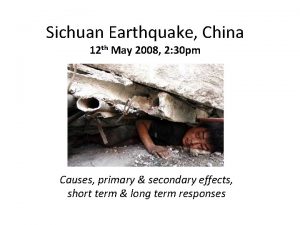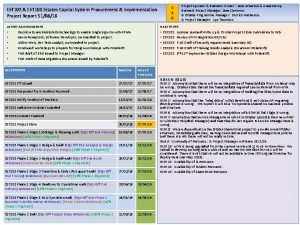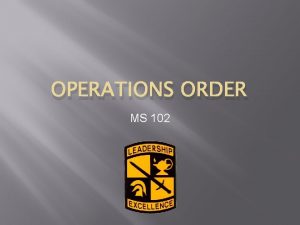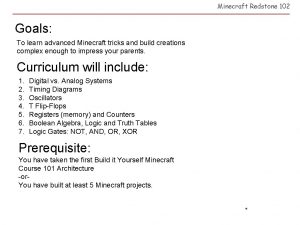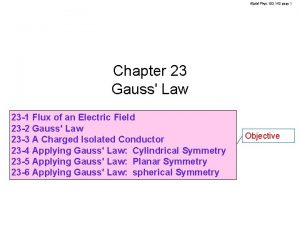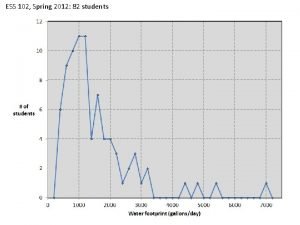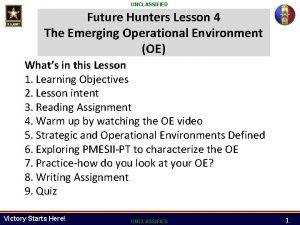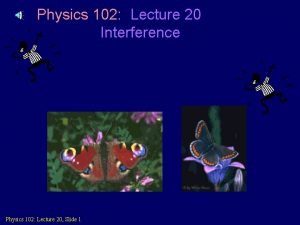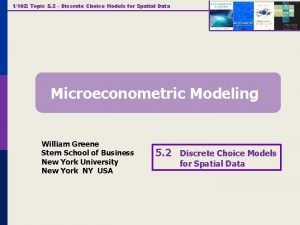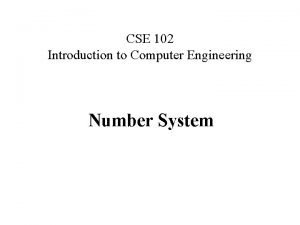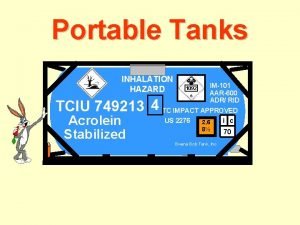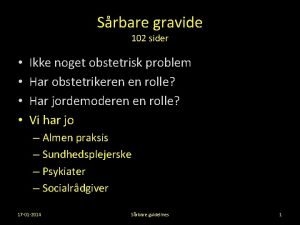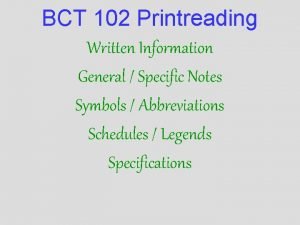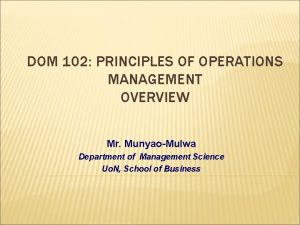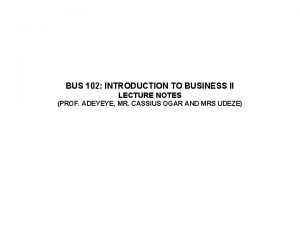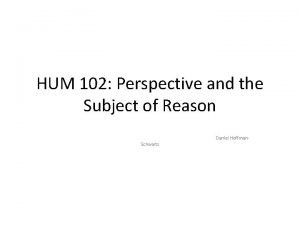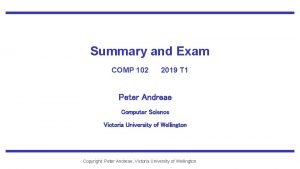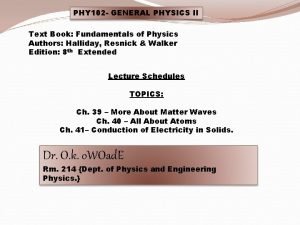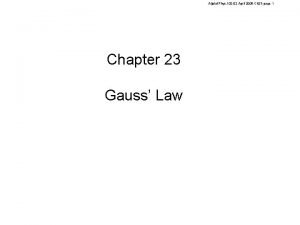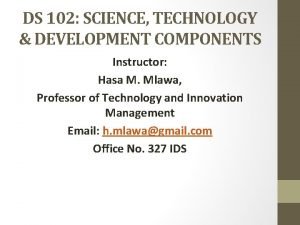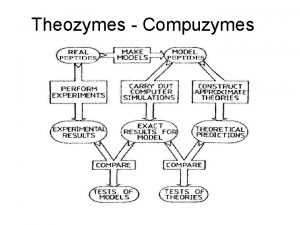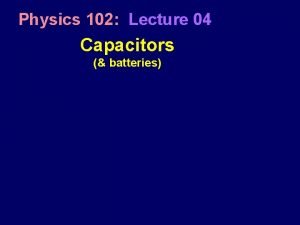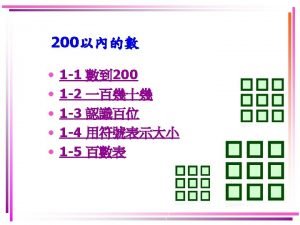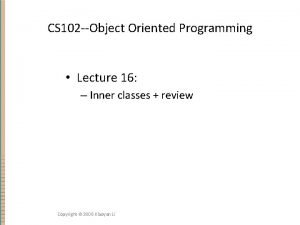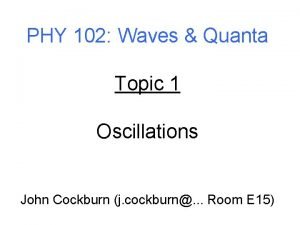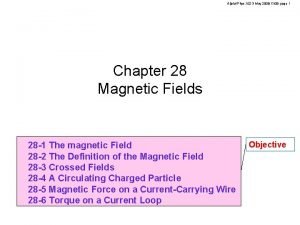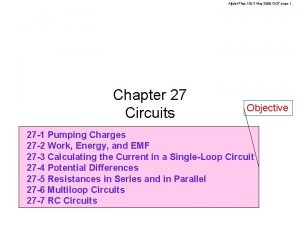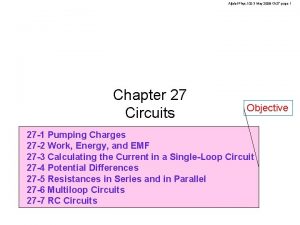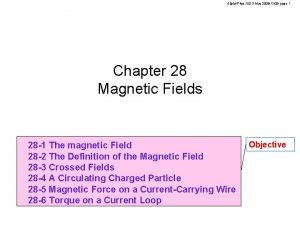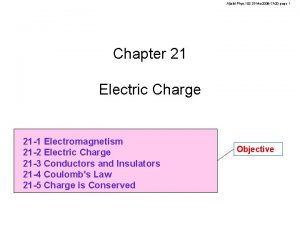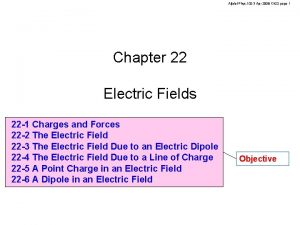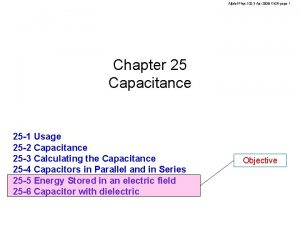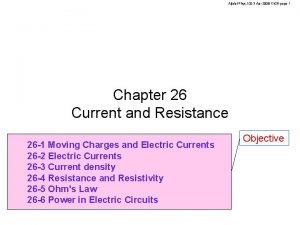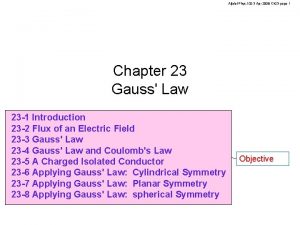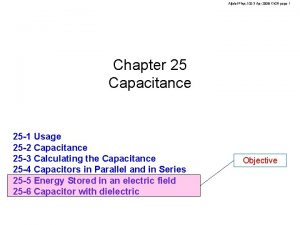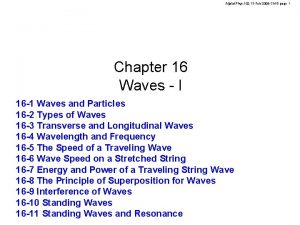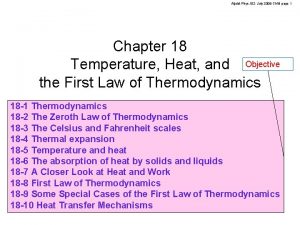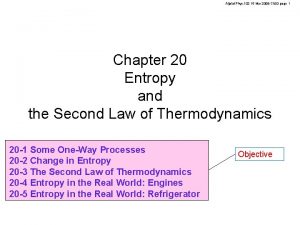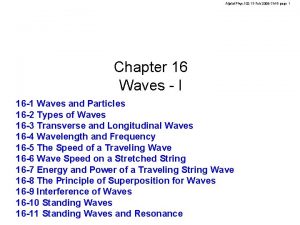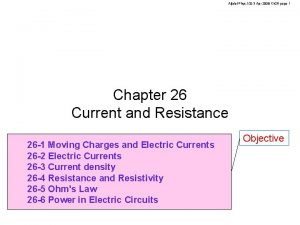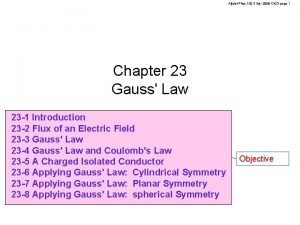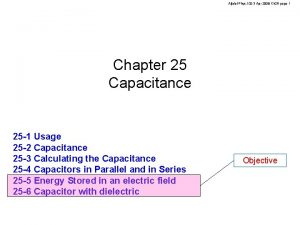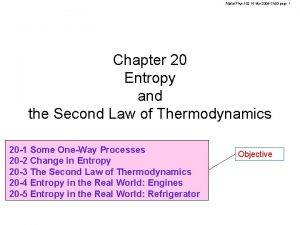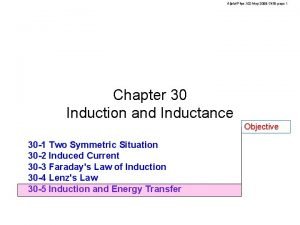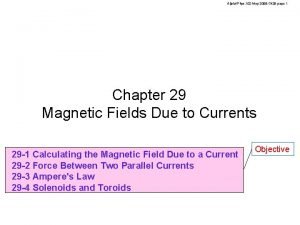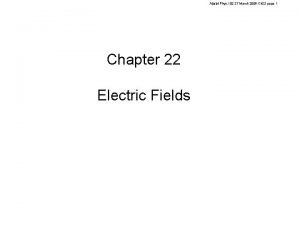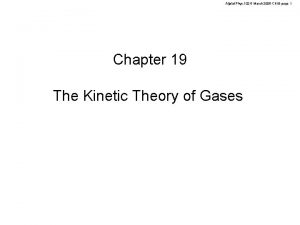AljalalPhys 102 3 May 2008 Ch 27 page
























































- Slides: 56

Aljalal-Phys. 102 -3 May 2008 -Ch 27 -page 1 Chapter 27 Circuits Objective 27 -1 Pumping Charges 27 -2 Work, Energy, and EMF 27 -3 Calculating the Current in a Single-Loop Circuit 27 -4 Potential Differences 27 -5 Resistances in Series and in Parallel 27 -6 Multiloop Circuits 27 -7 RC Circuits

Aljalal-Phys. 102 -3 May 2008 -Ch 27 -page 2 27 -1 Pumping Charges Emf devices Battery Electric generator Solar cell Devices that maintain potential difference between their terminals by doing work on charge carriers. These devices are called emf devices Emf is an outdated phrase which stands for electromotive force An emf device provides an emf E

Aljalal-Phys. 102 -3 May 2008 -Ch 27 -page 3 27 -2 Work, Energy, and EMF Battery Positive terminal Higher potential Internal chemistry of the battery causes a net flow of positive carriers from the negative terminal to the positive terminal. E Negative terminal Lower potential i Battery (Emf device) i R

27 -2 Work, Energy, and EMF Sources of energy in emf devices Motion is opposite to the electric field direction Battery Electric generator Solar cell Aljalal-Phys. 102 -3 May 2008 -Ch 27 -page 4 There must be some source of energy within the source that enables it to do work on the charge carriers. chemical energy mechanical energy light energy

27 -2 Work, Energy, and EMF Formula - Emf Aljalal-Phys. 102 -3 May 2008 -Ch 27 -page 5 The emf E of an emf device is the work per unit charge that an emf device does in moving charge from its lower-potential terminal to its higher-potential terminal. E dq

Aljalal-Phys. 102 -3 May 2008 -Ch 27 -page 6 27 -2 Work, Energy, and EMF Ideal emf devices have no internal resistance to the movement of charge. V E E V R Not connected to a circuit V=E Potential difference between the terminals = the emf of the device.

Aljalal-Phys. 102 -3 May 2008 -Ch 27 -page 7 27 -2 Work, Energy, and EMF Real emf devices have internal resistance to the movement of charge. V E E V R Not connected to a circuit V=E V<E When connected to a resistor, the potential difference between the terminals < the emf of the device.

Aljalal-Phys. 102 -3 May 2008 -Ch 27 -page 8 27 -2 Work, Energy, and EMF Energy conversion in an electric circuit Ideal rechargeable battery EA Electrical energy is converted into work. Motor Mass Chemical energy is increasing as energy is transferred from the charge carriers passing through it. Current direction is determined by the battery with the larger emf. i EB > EA EB R Electrical energy is dissipated as heat. Ideal rechargeable battery Chemical energy is decreasing as energy is transferred to the charge carriers passing through it.

Aljalal-Phys. 102 -3 May 2008 -Ch 27 -page 9 27 -2 Work, Energy, and EMF Energy conservation in an electric circuit EA i Motor Mass m EB > EA R EB Thermal energy produced by resistance R Chemical energy lost by battery B Chemical energy stored in battery A Work done by motor on mass m

Aljalal-Phys. 102 -3 May 2008 -Ch 27 -page 10 27 -3 Calculating the Current in a Single-Loop Circuit Energy method to analyze electric circuits The energy method i E R In time dt, thermal energy of d. E = i 2 R dt = i R dq will appear in the resistor In time dt, the battery will do work of d. W = E dq on dq Energy is conserved d. W = d. E E dq = i R dq E =i. R We will not use this method to analyze circuits

Aljalal-Phys. 102 -3 May 2008 -Ch 27 -page 11 27 -3 Calculating the Current in a Single-Loop Circuit Potential method to analyze electric circuits The potential method Find the change in the electric potential as you move around the circuit. Let us choose the clockwise direction. Thus the potential here is Va + E As we move across the battery, the potential increases by E because we are moving from. E lower to higher potential. Let us start here at point a. Call the potential here Va. i a In a resistor, the current flows from higher to lower potential. Higher potential As we move across the resistor, potential decreases by i R R the because we are moving from higher to lower potential. Lower potential The potential here is Va + E - i R. But this the same as Va. Va + E - i R = V a +E -i. R=0 E=i. R

Aljalal-Phys. 102 -3 May 2008 -Ch 27 -page 12 27 -3 Calculating the Current in a Single-Loop Circuit Direction does not affect the final result i i Higher potential E R E a Higher potential Lower potential R a Lower potential Change in potential for clockwise direction Va + E - i R = V a Change in potential for counterclockwise direction Va + i R - E = V a +E -i. R=0 +i. R-E =0 E=i. R Direction does not affect the final result.

Aljalal-Phys. 102 -3 May 2008 -Ch 27 -page 13 27 -3 Calculating the Current in a Single-Loop Circuit Loop rule i Higher potential R E a Lower potential Loop rule (Kirchhoff’s loop rule): The algebraic sum of the changes in potential encountered in a complete traversal of any loop of a circuit must be zero. Conservation of energy

Aljalal-Phys. 102 -3 May 2008 -Ch 27 -page 14 27 -3 Calculating the Current in a Single-Loop Circuit Signs convention Direction i Vi R Vf i Vi Vi Vi R E E Vf Vf - V i = - i R Vf - V i = + i R Vf - V i = - E Vf - V i = + E In a resistor, the current flows from higher to lower potential.

Aljalal-Phys. 102 -3 May 2008 -Ch 27 -page 15 27 -3 Calculating the Current in a Single-Loop Circuit Checkpoint 1 i a c B Battery R b Solution Draw the emf arrow E At points a, b, and c rank … the magnitude of current All tie the electric potential Vb > V a = V c the electric potential energy Ub > U a = U c

Aljalal-Phys. 102 -3 May 2008 -Ch 27 -page 16 27 -3 Calculating the Current in a Single-Loop Circuit b Real battery i Internal resistance r R E Real battery a Potential (V) E a r i R b a E ir E i. R - i r - i. R = 0

27 -4 Potential Differences Potential difference does not depend on the path i i b b r Aljalal-Phys. 102 -3 May 2008 -Ch 27 -page 17 r R R E E a a The potential difference between any two points in a circuit does not depend on the path

Aljalal-Phys. 102 -3 May 2008 -Ch 27 -page 18 27 -4 Potential Differences Potential difference across real battery E r=2 W = 12 V R = 10 W b b i r r V E a connected to a circuit V E a Not connected to a circuit

Aljalal-Phys. 102 -3 May 2008 -Ch 27 -page 19 27 -4 Potential Differences Checkpoint 2 Compare E and V b i r b r V E Solution r V E a connected b i V E a connected a Not connected

Aljalal-Phys. 102 -3 May 2008 -Ch 27 -page 20 27 -4 Potential Differences Power from real emf devices Real emf device P Pr Rate of energy transfer from the real emf device to the charge carriers b i V r R Electrons Pemf E a Rate of energy transfer form the emf device to the charge carriers and to internal thermal energy Rate of energy transfer to internal thermal energy

Aljalal-Phys. 102 -3 May 2008 -Ch 27 -page 21 27 -4 Potential Differences Example 1 i E 1 = 4. 4 V, E 2= 2. 1 V, r 1 = 2. 3 W, r 2 = 1. 8 W, R = 5. 5 W. What is the current in the circuit? battery 1 a battery 2 r 1 r 2 E E 1 2 b i R c Solution Pick any direction for the current. Pick any direction for the loop rule. If your guess is wrong, your current will be negative.

Aljalal-Phys. 102 -3 May 2008 -Ch 27 -page 22 27 -4 Potential Differences Example 2 i E 1 = 4. 4 V, E 2= 2. 1 V, r 1 = 2. 3 W, r 2 = 1. 8 W, R = 5. 5 W, i = 240 m. A. What is the potential difference between the terminals of battery 1? Solution battery 1 a battery 2 r 1 r 2 E E 1 2 b i R c

Aljalal-Phys. 102 -3 May 2008 -Ch 27 -page 23 27 -4 Potential Differences Example 3 i E 1 = 4. 4 V, E 2= 2. 1 V, r 1 = 2. 3 W, r 2 = 1. 8 W, R = 5. 5 W, i = 240 m. A. battery 1 Potential (V) Let Va = 0 a i i r 1 b r 2 E E 1 2 i b E 1 battery 2 r 1 Redraw the circuit such that all the components are located on a horizontal line then plot the potential as a function of the location on the line. Solution r 1 a R c E 2 E 1 R c r 2 E 2 i. R a i r 2

27 -5 Resistances in Series and in Parallel Resistances in series b i E R 1 V R 2 V 2 R 3 V 3 a For steady flow of charge Aljalal-Phys. 102 -3 May 2008 -Ch 27 -page 24 Resistances in series Resistances are wired one after another and a potential difference is applied to the two ends of the series. The applied potential difference V is equal to the sum of the potential differences across all the resistances. V = V 1+V 2+V 3 Since the charge is conserved, all the resistances have the same current i. i = i 1= i 2 = i 3

27 -5 Resistances in Series and in Parallel Formula - Resistances in series b i E R 1 V R 2 V 2 R 3 V 3 Aljalal-Phys. 102 -3 May 2008 -Ch 27 -page 25 The equivalent resistance Req has the same current i = i 1 = i 2 = i 3 and the same total potential difference V = V 1+V 2+V 3 as the actual resistances. Equivalent resistance a b i E V a Req For n resistances in series

27 -5 Resistances in Series and in Parallel Derivation - Resistances in series b i E Derivation of R 1 V R 2 V 2 R 3 V 3 a b i E V a Req Aljalal-Phys. 102 -3 May 2008 -Ch 27 -page 26

27 -5 Resistances in Series and in Parallel Resistances in parallel b i i 1 E V R 1 Aljalal-Phys. 102 -3 May 2008 -Ch 27 -page 27 i 2 R 2 i 3 Resistances are directly wired together on one side and directly wired together on the other side and a potential difference is applied across the pair of connected sides. a All the resistances have the same potential difference. V = V 1= V 2= V 3 Since the charge is conserved, the total current passing through the resistances is equal to the sum of the current passing through each resistance. i = i 1+ i 2 + i 3 For steady flow of charge

27 -5 Resistances in Series and in Parallel Formula - Resistances in parallel i b i 1 E V R 1 i 2 R 2 a b E V a i 3 R 3 Aljalal-Phys. 102 -3 May 2008 -Ch 27 -page 28 The equivalent resistance Req has the same total current i = i 1 + i 2 + i 3 and the same potential difference V = V 1= V 2 = V 3 as the actual resistances Equivalent resistance i Req For n resistances in parallel Req is smaller than any of the actual resistances.

27 -5 Resistances in Series and in Parallel Derivation - Resistances in parallel Derivation of b i i 1 E V R 1 i 2 R 2 a b E V a i Req i 3 R 3 Aljalal-Phys. 102 -3 May 2008 -Ch 27 -page 29

27 -5 Resistances in Series and in Parallel Comparison i E Resistances in series R 1 V R 2 V 2 R 3 V 3 i = i 1 = i 2 = i 3 V = V 1 + V 2 + V 3 i i 1 E Aljalal-Phys. 102 -3 May 2008 -Ch 27 -page 30 V R 1 i 2 R 2 i 3 Resistances in parallel i = i 1 + i 2 + i 3 V = V 1= V 2 = V 3

Aljalal-Phys. 102 -3 May 2008 -Ch 27 -page 31 27 -5 Resistances in Series and in Parallel Example 4 E = 12 V, R 1 = 20 W, R 2 = 20 W, R 3 = 30 W, R 4 = 8. 0 W, i E R 1 R 4 R 2 R 3 What is the current through the battery? parallel Solution Simplify the circuit i R 1 E R 4 R 23 series i E R 2314

Aljalal-Phys. 102 -3 May 2008 -Ch 27 -page 32 27 -5 Resistances in Series and in Parallel Example 5 E= 12 V, R 1 = 20 W, R 2 = 20 W, R 3 = 30 W, R 4 = 8. 0 W, R 23 = 12 W, i = 0. 3 A What is the current i 2 through R 2? i E b i 2 R 3 R 1 R 2 R 4 a Solution b i R 1 E R 1, R 23 and R 4 are in series, currents thorough R 2314 and R 23 are equal. R 23 R 4 R 2 and R 3 are in parallel, potential differences across R 2 and R 23 are equal. parallel a series i E R 2314

Aljalal-Phys. 102 -3 May 2008 -Ch 27 -page 33 27 -5 Resistances in Series and in Parallel Example 6 E= 12 V, R 1 = 20 W, R 2 = 20 W, R 3 = 30 W, R 4 = 8. 0 W, i E b i 2 R 3 R 1 R 2 R 4 R 23 = 12 W, i = 0. 3 A, i = 0. 18 A, Vba = 3. 6 A What is the current i 3 through R 3? i 3 a Solution b i R 1 E parallel R 23 R 4 a series Another way i E R 2314

Aljalal-Phys. 102 -3 May 2008 -Ch 27 -page 34 27 -5 Resistances in Series and in Parallel Checkpoint 3 b i E R 1 V R 2 V 2 R 3 V 3 Let R 1 > R 2 > R 3 Rank … a Solution the current through the resistances All tie the potential difference across them R 1 > R 2 > R 3 i R 1 > i R 2 > i R 3 V 1 > V 2 > V 3

Aljalal-Phys. 102 -3 May 2008 -Ch 27 -page 35 27 -6 Multiloop Circuits Definitions junction a branch i 1 R 3 a i 3 i 2 E R 2 E 3 E 1 branch 2 i i 1 branch R 4 3 R 5 b junction b Pick any direction for the currents If your guess is wrong, your current will be negative. The actual current is moving opposite to your guess. Any point in a branch has the same current.

Aljalal-Phys. 102 -3 May 2008 -Ch 27 -page 36 27 -6 Multiloop Circuits Junction rule junction a i 1 R 3 a i 3 i 2 E R 2 E 3 E 1 R 4 2 i i 1 3 R 5 b junction b Junction rule (Kirchhoff’s junction rule): The sum of the currents entering any junction must be equal to the sum or the currents leaving that junction. Conservation of charge for steady flow of charge

Aljalal-Phys. 102 -3 May 2008 -Ch 27 -page 37 27 -6 Multiloop Circuits Unknowns and independent equations i 1 R 3 a i 3 i 2 E R 2 E 3 E 1 R 4 2 i i 1 3 R 5 b To analyze a circuit, we need to find as many independent equations as the number of unknowns in the circuit. Suppose R’s and E’s are given. we need to find i 1, i 2, and i 3 Number of unknowns = 3 Number of independent equations = 3

27 -6 Multiloop Circuits Illustration - Unknowns and independent equations i 1 junction a R 1 R 3 a Aljalal-Phys. 102 -3 May 2008 -Ch 27 -page 38 i 3 i 2 Loop E E R 2 Loop 1 E 1 2 3 R 4 2 i i 1 3 R 5 b Junction rule at junction a Loop rule on loop 1 Loop rule on loop 2 We have three unknowns and three independent equations

Aljalal-Phys. 102 -3 May 2008 -Ch 27 -page 39 27 -6 Multiloop Circuits Example 7 E 1 = 3. 0 V, E 2= E 3 = 6. 0 V, R 1 = R 3 = R 4 = R 5 = 2. 0 W, R 2 = 4. 0 W. Find the magnitude and the direction of the current in each branch. i 1 junction a R 1 a Junction rule at junction a Loop rule on loop 1 Loop rule on loop 2 i 3 i 2 Loop E E R 2 Loop 1 E 1 2 i i 1 3 R 5 Solution R 3 b 2 3 R 4

27 -6 Multiloop Circuits Example 7 Solution Eliminate one variable, say i 3 Eliminate another variable, say i 2 Aljalal-Phys. 102 -3 May 2008 -Ch 27 -page 40

Aljalal-Phys. 102 -3 May 2008 -Ch 27 -page 41 27 -6 Multiloop Circuits Example 7 Solution i 1 R 3 i 2 E R 2 3 E E 1 i 2 2 i 3 i 1 R 5 Our guess for the direction of i 2 is wrong, it should be in the opposite direction. Only after you finish finding all currents in a circuit, you can correct your guesses about directions. R 4

27 -6 Multiloop Circuits Illustration - Dependent equation from a junction i 1 R 1 junction a R 3 a Aljalal-Phys. 102 -3 May 2008 -Ch 27 -page 42 i 3 i 2 E R 2 3 E E 1 R 4 2 i i 1 3 R 5 b junction b Junction rule at junction a Junction rule at junction b Same. No new information. These are not independent equations

Aljalal-Phys. 102 -3 May 2008 -Ch 27 -page 43 27 -6 Multiloop Circuits Illustration - Dependent equation from loop i 1 R 3 a i 3 i 2 Loop E E R 2 Loop 1 1 E Loop 3 i 1 R 5 2 2 b i 3 Loop rule on loop 1 Loop rule on loop 2 Add the two equations Loop rule on loop 3 Same as loop 1 + loop 2. No new information. You can only use two of the three loops. 3 R 4

Aljalal-Phys. 102 -3 May 2008 -Ch 27 -page 44 27 -7 RC Circuits Charging a capacitor a E initial S Charging a capacitor R i b C No charge E a S R b C At t = 0, switch to position a What is the charge on the capacitor as a function of time? Loop rule Differential equation At t = 0, At t = ∞,

27 -7 RC Circuits Formula - Charge on a capacitor while charging Differential equation Aljalal-Phys. 102 -3 May 2008 -Ch 27 -page 45 Solution At t = 0, While charging the capacitor At t = ∞, Charge q t =RC Time t

Aljalal-Phys. 102 -3 May 2008 -Ch 27 -page 46 27 -7 RC Circuits Formula - Current through a capacitor while charging q i t t i E a S t= 0, R b C Initially, the capacitor acts as a connecting wire. t= ∞, finally, the capacitor acts as a broken wire.

Aljalal-Phys. 102 -3 May 2008 -Ch 27 -page 47 27 -7 RC Circuits Formula - Potential difference across a capacitor while charging q VC t t i E a S t= 0, R Initially, the capacitor acts as a connecting wire. b C VC t= ∞, finally, the capacitor acts as a broken wire.

27 -7 RC Circuits Time constant Aljalal-Phys. 102 -3 May 2008 -Ch 27 -page 48 RC has dimension of time RC = t Dimension similar to RC = capacitive time constant After one time constant t pronounced tau

27 -7 RC Circuits Derivation - Charge on a capacitor while charging Show that Aljalal-Phys. 102 -3 May 2008 -Ch 27 -page 49 is a solution of At t = 0, q = 0 At t = ∞, Check the solution At t = 0, At t = ∞,

Aljalal-Phys. 102 -3 May 2008 -Ch 27 -page 50 27 -7 RC Circuits Discharging a capacitor a E S Discharging a capacitor a R b C E R S b C i initial At t = 0, switch to position b What is the charge on the capacitor as a function of time? Differential equation

27 -7 RC Circuits Formula - Charge on a capacitor while discharging a E Aljalal-Phys. 102 -3 May 2008 -Ch 27 -page 51 R S b C i At t = 0, switch to position b Differential equation Solution At t = 0, At t = ∞, While discharging the capacitor

Aljalal-Phys. 102 -3 May 2008 -Ch 27 -page 52 27 -7 RC Circuits Formula - Current through a capacitor while discharging a E R S b C i i Discharging a capacitor Our guess for the direction of the current is wrong

Aljalal-Phys. 102 -3 May 2008 -Ch 27 -page 53 27 -7 RC Circuits Discharging after one time constant a E S R b C i Discharging a capacitor After one time constant

Aljalal-Phys. 102 -3 May 2008 -Ch 27 -page 54 27 -7 RC Circuits Example 8 Discharging a capacitor In terms of RC, when will the charge on the capacitor be half its initial value? Solution a E S R b C At t = 0, switch to position b

Aljalal-Phys. 102 -3 May 2008 -Ch 27 -page 55 27 -7 RC Circuits Example 9 Discharging a capacitor In terms of RC, when will the energy stored in the capacitor be half its initial value? Solution a E S R b C At t = 0, switch to position b

Aljalal-Phys. 102 -3 May 2008 -Ch 27 -page 56 27 -7 RC Circuits Checkpoint 4 Rank the sets according to … A - initial current B - time required for the current to decrease to its half its initial value Charging a capacitor a R i S b E C At t = 0, switch to position a Solution E(V) 12 12 10 10 R(W) 2 3 10 5 C(m. F) 3 2 0. 5 2 A 1 2 4 3 B 2 2 4 1
 2008 2008
2008 2008 12th may 2008
12th may 2008 Apa.format title page
Apa.format title page Hci patterns
Hci patterns Childrens temperature chart
Childrens temperature chart 102 est
102 est Fitness 102
Fitness 102 Opord format
Opord format Iho s-102
Iho s-102 Redstone oscillator
Redstone oscillator Psalm 102
Psalm 102 102 graphic
102 graphic Concrete curring
Concrete curring Gauss law statement
Gauss law statement Ess 102 uw
Ess 102 uw Tc 7-102
Tc 7-102 Ka 102
Ka 102 Physics 102
Physics 102 Data 102
Data 102 Ni 23-102
Ni 23-102 Ifrs 102
Ifrs 102 +10210
+10210 28 elmanın çeyreği kaç elma eder
28 elmanın çeyreği kaç elma eder Iat 102
Iat 102 Iat 102
Iat 102 Im 102 portable tank
Im 102 portable tank Met 102
Met 102 Servicelovens 102
Servicelovens 102 Bct 102
Bct 102 Dom 102
Dom 102 Find x
Find x Ess 102
Ess 102 Is 169 prime or composite
Is 169 prime or composite Eng 102 bilkent
Eng 102 bilkent Bus 102 pdf
Bus 102 pdf Bisc 102 sfu
Bisc 102 sfu Hum 102
Hum 102 Comp 102
Comp 102 Info 102
Info 102 George carlin aging philosophy
George carlin aging philosophy Physics 102
Physics 102 35 usc 102
35 usc 102 102 cube
102 cube Ds-102
Ds-102 Asp 102
Asp 102 Physics 102 electricity and magnetism
Physics 102 electricity and magnetism ?3305501049 0000 28|.|091 27|.|071 98|.|553 102|.|311 13`
?3305501049 0000 28|.|091 27|.|071 98|.|553 102|.|311 13` Hum 102
Hum 102 Physics 102
Physics 102 Csc 102 introduction to problem solving
Csc 102 introduction to problem solving 100 101 102 103 104 105 106 107 108 109 110
100 101 102 103 104 105 106 107 108 109 110 Psychology 102 practice test
Psychology 102 practice test Cs 102 midterm
Cs 102 midterm Natalis laetus tibi
Natalis laetus tibi Iat 102
Iat 102 102
102 Convenio 102 de 1952 oit
Convenio 102 de 1952 oit

